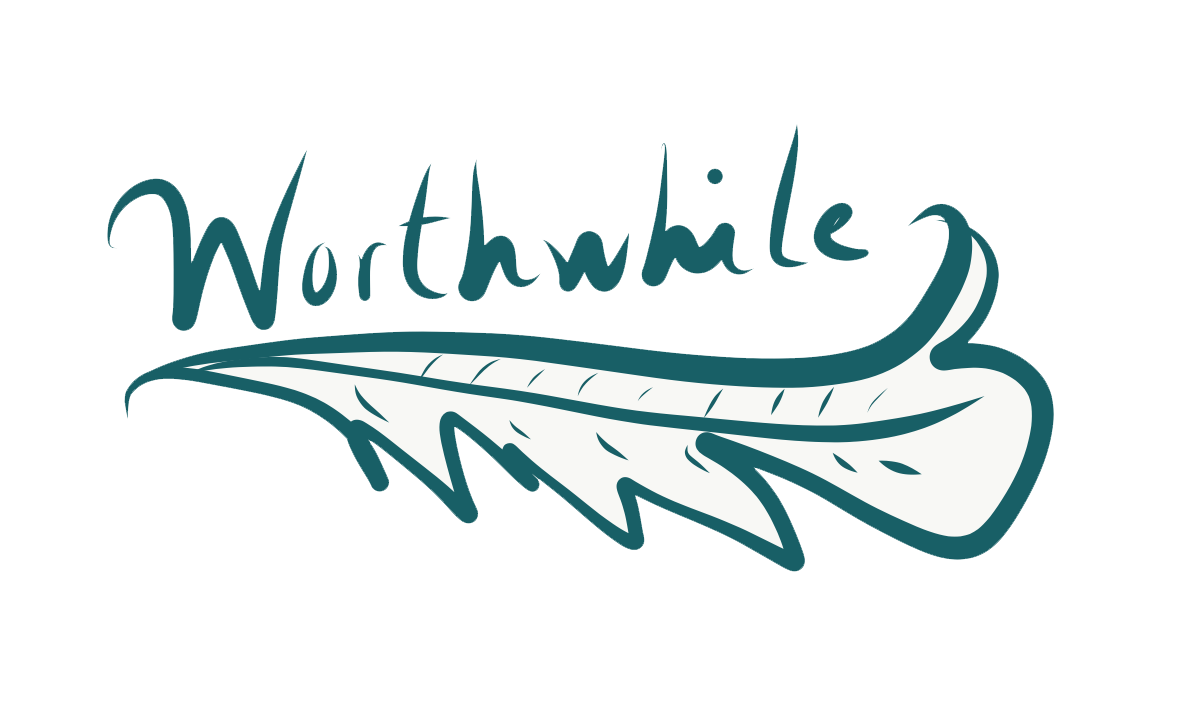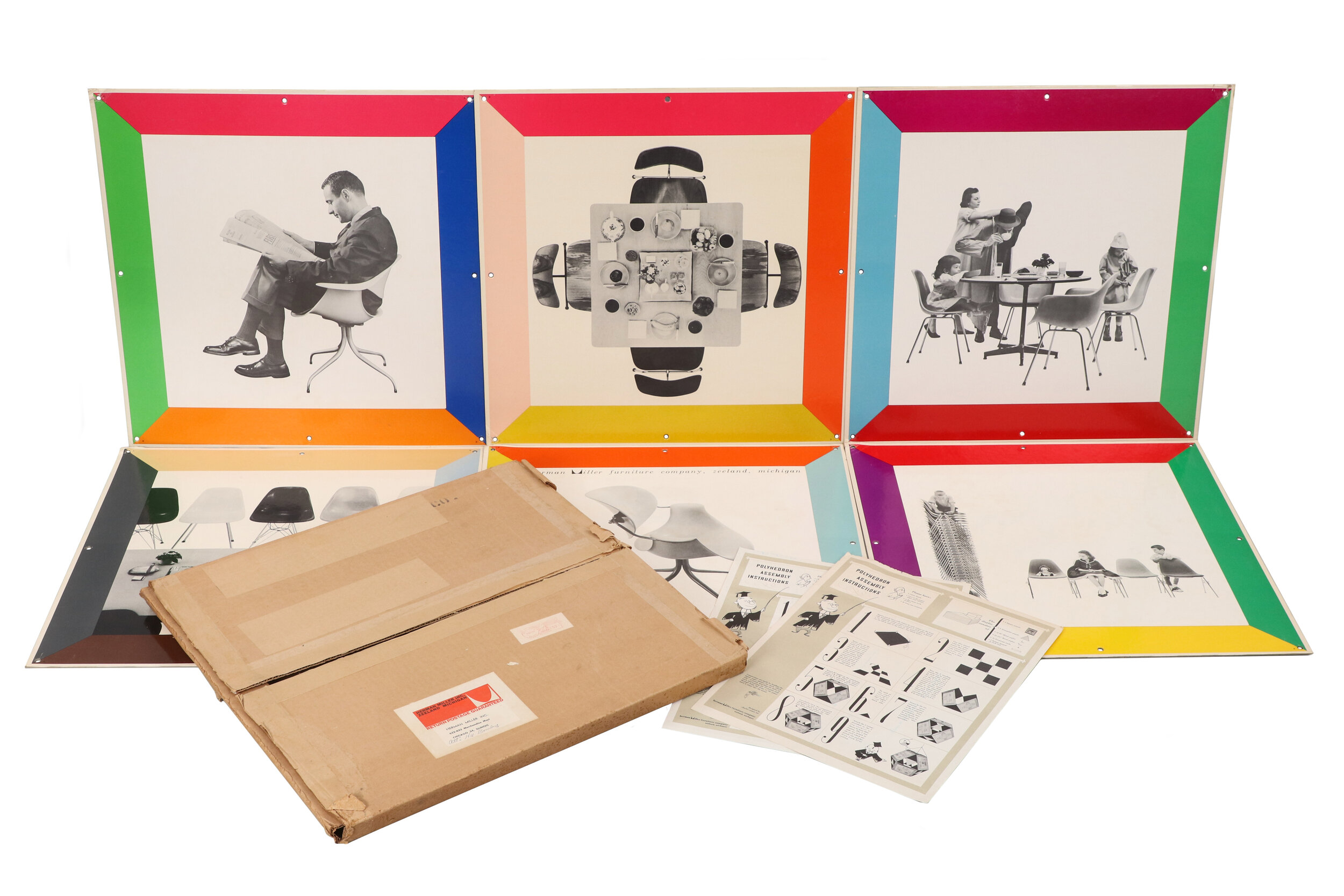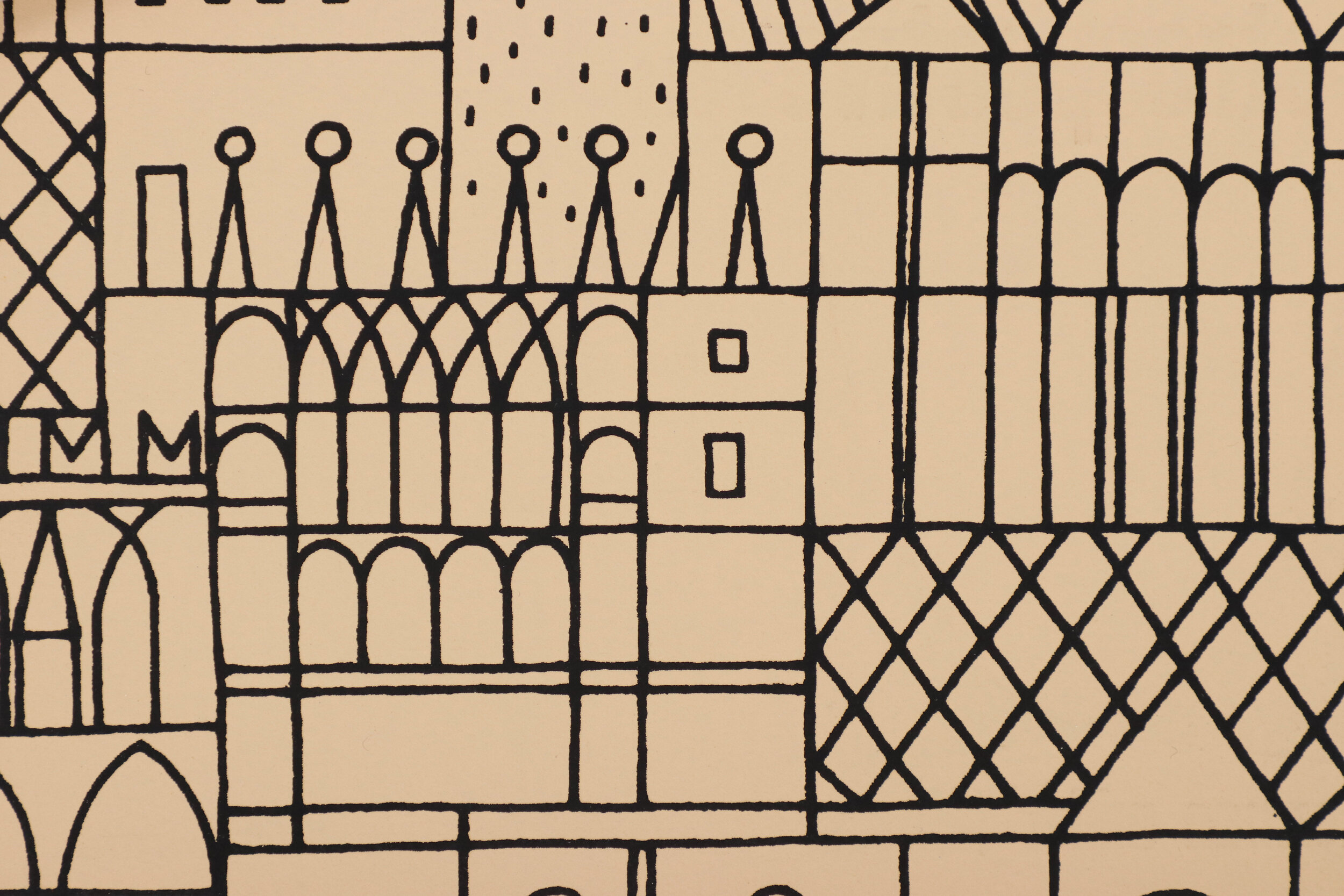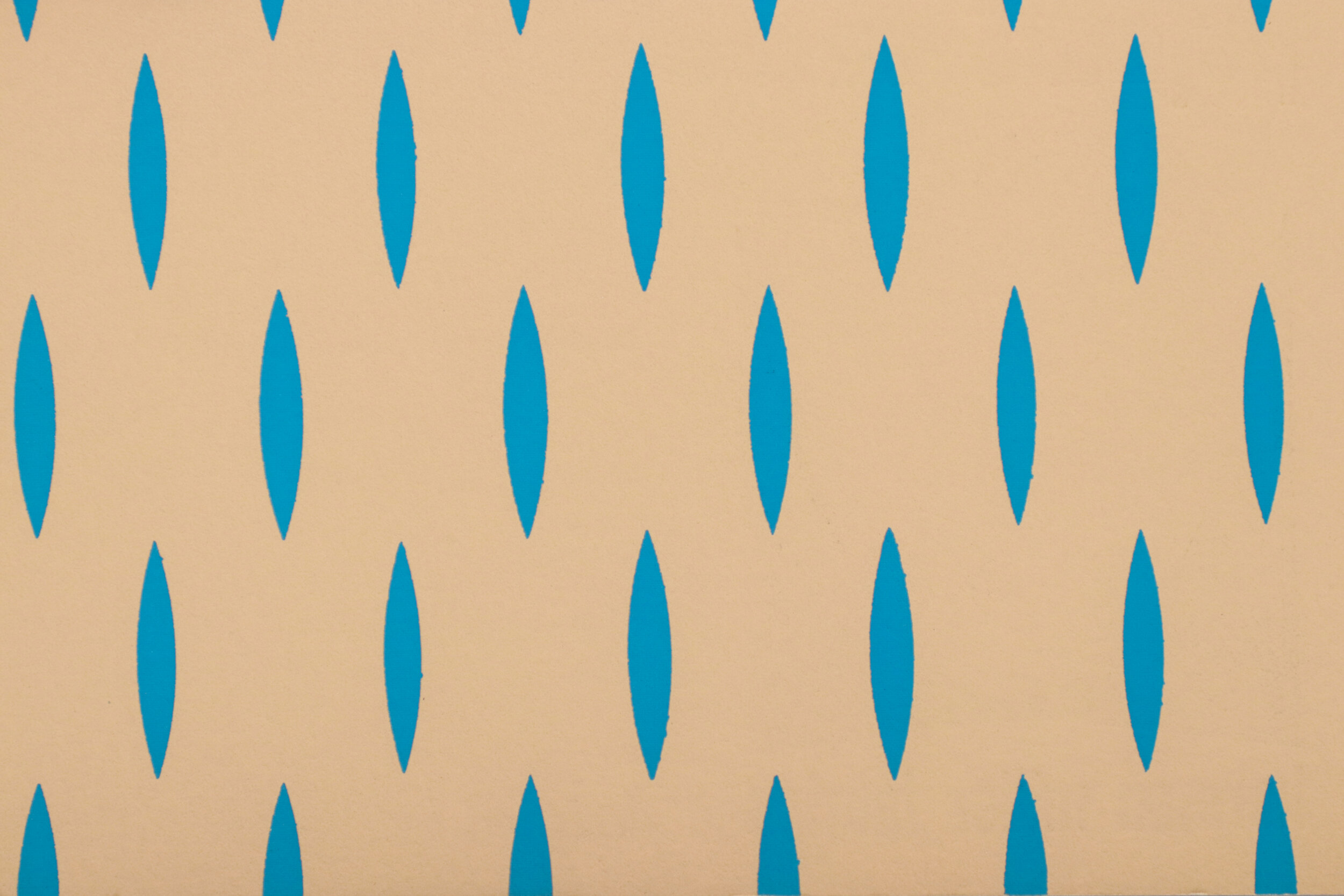A Conversation with Alexander Wendl: Creator and Curator of TOAD Archive
Alexander Wendl is the creator and curator of TOAD Archive. This privately curated digital archive explores historical textiles, objects, and documents from the midcentury period with the mission of making private collections public. In this conversation with Worthwhile Magazine, Alexander discusses his inspiration for founding TOAD Archive and shares his insights about the importance of archiving midcentury modern design history and providing access to objects from this period to facilitate research and appreciation of this design era.
A selection of Herman Miller brochures included in TOAD Archive, image courtesy of and copyright Alexander Wendl
The Conversation
Worthwhile Magazine (WM): Here at Worthwhile Magazine, we are so excited to learn of the launch of TOAD Archive! Your mission of making private collections public through the archive is closely aligned with our own guiding mission. Can you tell us more about TOAD Archive? What inspired you to create it?
Alexander Wendl (AW): The idea of TOAD Archive began four years ago. After spending a few years collecting and establishing contacts in the design community, I quickly concluded that collecting was not the main point. It's about connections, the people behind the collections, and the sharing. I noticed how many inaccessible treasures are out there in private collections, and it hurts me to see how these objects that were made to enrich people's lives are hidden now! TOAD's vision is to bring these lost pieces back into the spotlight.
Alexander Wendl of TOAD Archive, image courtesy of and copyright Alexander Wendl
WM: We'd love to hear more about your background, Alex. How did you become a midcentury modern design expert?
AW: I wouldn't call myself a midcentury modern design expert. The experts in this field are people like Amy Auscherman (Design Archivist for Herman Miller) or Daniel Ostroff (Author of An Eames Anthology), and many more. I see myself more as a keeper of design history.
It all started with a birthday present for my wife… The gift was two Eames DSR chairs. As so often happens, I quickly become enthusiastic about certain topics and promptly became nearly obsessed with the Eames universe. My wife would now roll her eyes and say: "Typical!"
Then there were my studies as a media engineer for design and technology. The focus was graphic design and photography, so the Eames story was a breeding ground for me. Now I am 31 years old and have worked in an auction house for the last four years. This is also a great inspiration because I am constantly surrounded by historical items. I am lucky to be part of a great design community.
WM: Who are a few of your favorite designers?
AW: Alexander Girard is definitely at the top of the list. I was thrilled to see that he was a creative spirit very early on. He lived in his own world and created what he wanted. Implementing this as an adult and staying true to yourself in everything you do impresses me. Apart from this, his designs are just awesome!
Alexander Girard, “Barber Pole” textile design for Herman Miller, 1961, Image courtesy of and copyright Alexander Wendl.
Irving Harper paper sculpture, image courtesy of and copyright Alexander Wendl
Another favorite designer is Irving Harper. Harper is usually not well known for his work, but he was a genius in his field. What touched me most was his personal work. The paper sculptures that he created just for himself and his wife are unique. There is a lot of love in them. In studying the paper sculptures, you can feel moments in which he was only preoccupied with himself and his mind. They feel like a very private and intimate glimpse into his inner creative life.
WM: We both adore the work of Alexander Girard. What are your favorite aspects of his design portfolio?
AW: Graphics and color. Being a designer myself, I know only too well how quickly graphics and colors can become too much! It can be almost overwhelming in a bad way. Alexander Girard, on the other hand, knew exactly what he was doing. He used his designs where it was needed the most and especially in a time when color was in short supply. Girard was a master at designing for the residential environment, public facilities, and offices. He enriched our lives enormously. I think that's the most important aspect.
Polyhedron for Herman Miller Chicago Showroom, 1962 image courtesy of and copyright Alexander Wendl
WM: What sort of content can our readers find on TOAD Archive?
AW: First of all, the focus is on the archive. All midcentury modern sections will be added step by step, with content ranging from Alexander Girard textiles to Herman Miller ephemera. Our primary focus is the Eames universe, but other midcentury modern companies such as Knoll, Jens Risom, or Angelo Testa can also be found there. You can also find a "Story" area where you can read articles from the design community and an interview area, "10 Questions About", where design historians doing important scholarship of this period share fascinating insights about their work.
WM: What is the inspiration behind the name TOAD? Is it an acronym for anything?
AW: Yes, it means "TEXTILE OBJECTS & DOCUMENTS." [Editorial Note from Worthwhile Magazine™: We love how this is a play on words referencing "Textiles & Objects," the store Alexander Girard ran in New York City in the 1960s!]
Herman Miller brochures, image courtesy of and copyright Alexander Wendl
WM: What is your vision for the future of TOAD Archive? How do you plan to expand the archive and scholarly design content?
AW: My goal would be to create a home base for design enthusiasts and collectors and build a community that engages them in sharing their items with TOAD Archive. This will allow us to expand the archive steadily.
Another goal is to work with other organizations. By serving as an intermediary for private collectors, TOAD Archive looks forward to establishing working partnerships with institutions and organizations. I hope to collaborate in creating exhibitions in the future. It's just something completely different to see these pieces in real life, and I would love to facilitate that experience for people.
WM: The inaccessibility of design and art items in private collections is an issue we are passionate about at Worthwhile Magazine™, and one that will likely become even more problematic if museums aggressively deaccession items in their collections in the future. What is your philosophy about scholarly access, especially for items in private collections? How did that inform the mission and structure of TOAD Archive?
Herman Miller brochures, image courtesy of and copyright Alexander Wendl
AW: That is absolutely correct. It is not just the private collector who buries many treasures. Even institutions are sometimes not yet in a position to make their collections objects available online, or they may not even want to!
There are also very positive examples in the midcentury modern sector. Herman Miller, for example, is already working on an online archive, and that's a good thing! The Cooper Hewitt Museum has over 1,400 Girard textiles available online! All of this is important because especially these institutions should be more transparent.
At this moment, it is also easy to see the critically important role that archivist like Amy Auscherman (Herman Miller) or curator Katherine White (Henry Ford) hold. Not only do they represent the company, but also for spreading and preserving knowledge and combining the past with the future. TOAD sees itself as a supporter of this ideology. This is one of the reasons why TOAD is giving away data that is missing from other archives for free. We also try to clarify this point of view to the private collectors and how important it is to share these collections.
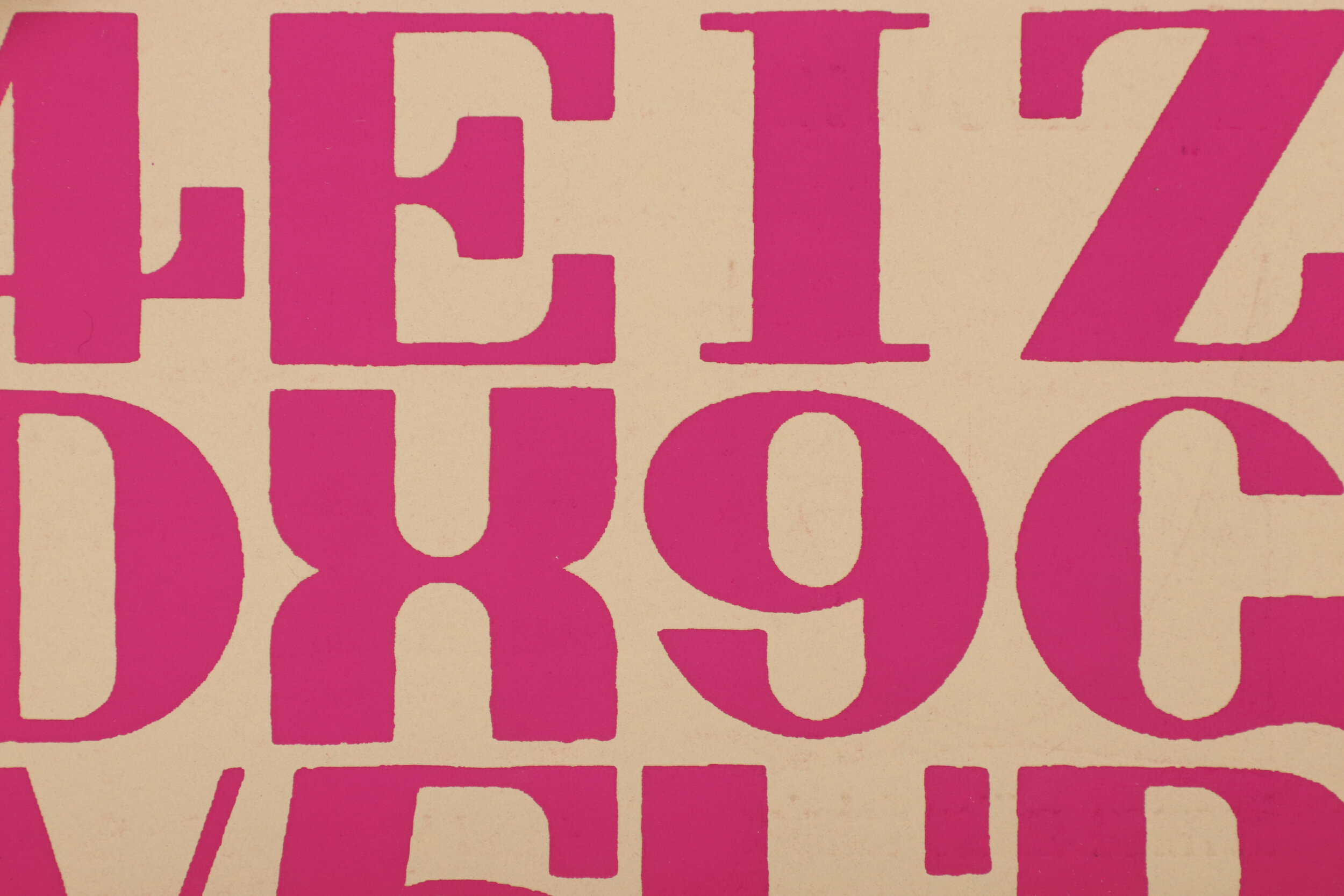
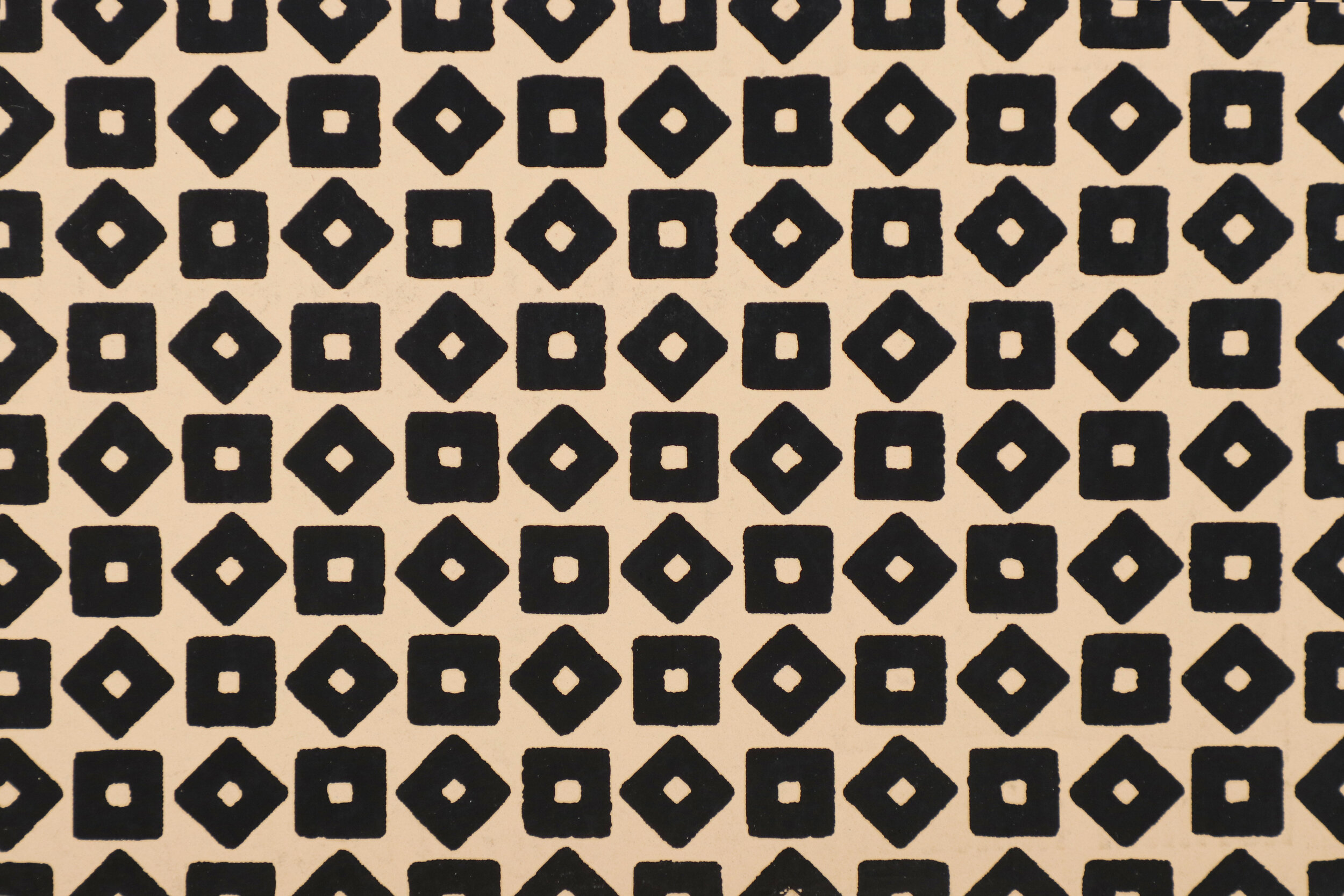
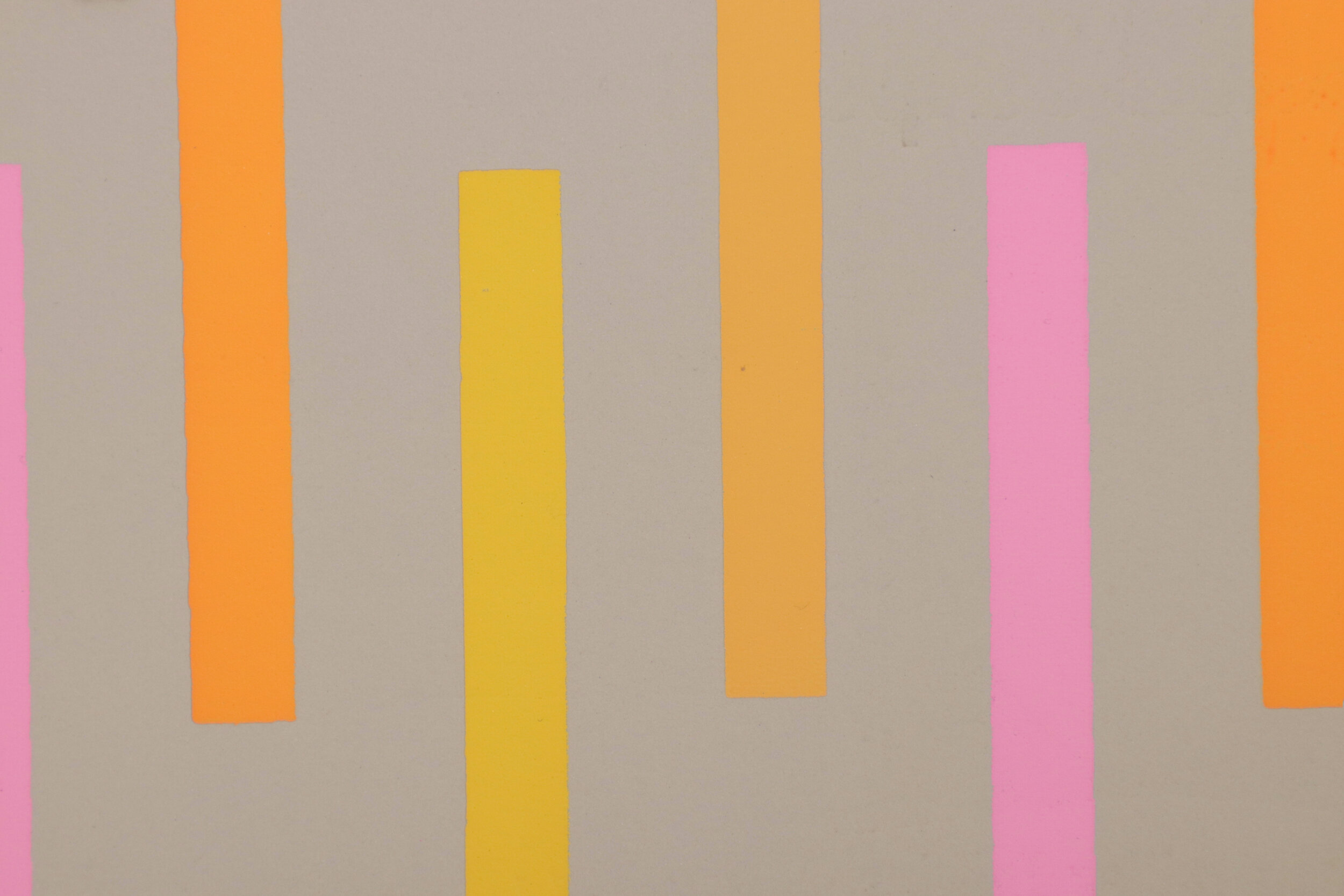
WM: In an increasingly digital world, do you think our engagement of material culture has changed? If so, what are the pros and cons?
AW: A very good question! In my opinion, the digital world is both a curse and a blessing at the same time. Basically, I think it has changed. In a world in which everything revolves around the screen, it has become increasingly difficult to inspire people for art and culture in a traditional sense. Many no longer want to slow down and invest time to educate themselves through visiting an exhibition. To physically interact with an exhibition with sufficient peace and with time is really important.
Alexander Girard for Herman Miller wallpaper booklet, image courtesy of and copyright Alexander Wendl
Do not get me wrong. I love to immerse myself in the world of art online, such as a video from the Met with dramatic music as they move and restore objects to create an exhibition. Clearly impressive and the feelings come across very well. However, I find that art online often lacks the power to awe people, like that special moment for people first see a Monet painting when it is so impressive in full size for the first time in their lives. It is so impressive it moves them to tears. I think digitization has changed our ability to fully access our emotional world. These moments are faded through technology. With the possibility to see everything and everywhere online, we lose the sense of wonder that came with experiencing art in person!
But of course, it's not all bad. Especially now in this difficult time with the pandemic, you can see how things are taking shape and using technology to accomplish positive innovations. There are wonderful online corporations that you can follow almost every day, discussions in live chats with outstanding artists and experts, and also virtual tours through museums and archives. I recently heard an ASMR recording from the Victoria & Albert Museum. It was about Charlie Chaplin and Henry Irving, allowing viewers not only to see an object displayed when visiting a museum but also to hear it. What does Charlie Chaplin's hat sound like? How exciting is that!
Ceramic collection designed by Alexander Girard for La Fonda del Sol restaurant, image courtesy of and copyright Alexander Wendl
All in all, there are advantages and disadvantages and we have to be open-minded. Traditions should, however, be preserved.
WM: As you know, many Herman Miller and Knoll pieces continue to be produced and sold based on midcentury designs. Why do you think these 'vintage' forms are still so appealing to us?
AW: Timelessness plays a major role. These pieces of furniture were reduced to the essentials and were intended to serve a very specific purpose. Functionality is the keyword.
Of course, a classic is not created overnight, but people knew that these furniture designs were revolutionary. And it’s okay to invest in a product that lasts longer. According to the motto: "We buy a lounge chair that will last generations!" These companies still spread this message to their customers today, which contributes significantly to their success.
WM: What types of items in private collections are you looking to add to TOAD Archive in the future?
AW: Launching the archive with such a unique and huge Alexander Girard textile collection belonging to my very good friend Vince Bravo was simply amazing, but TOAD Archive is not limited to textiles. In the future, I am looking to add pretty much everything relevant to the textiles, objects, and documents from the American midcentury modern range. Do not hesitate to inquire about curiosities also. We like the unusual too!
WM: Who are some of the designers whose work you are looking for to add to TOAD Archive in the future?
AW: We have already included a few designers who we would like to feature as we expand our content in the future. For example, some are Jens Risom, Angelo Testa, and Jack Lenor Larson. But there are too many great designers to list them here!
WM: How can people get in touch with you if they have items in their private collections to add to TOAD Archive?
AW: Just send a message to toad.archive@gmail.com or get in touch via the archive website through the "Contact" section. I am really happy to talk with people even if they have nothing for the archive! I enjoy chatting with them about our shared passion for midcentury modern design.
WM: What is your process for adding new objects to TOAD Archive?
Image courtesy of and copyright Alexander Wendl
AW: Basically, we first ask people what kind of collection it is and whether these are currently accessible. After a consultation, people can then decide for themselves whether they want to photograph/scan your belongings themselves, or whether we can provide a photographer. Then the data will be transmitted, and we will gradually add it to our system. Every collector is of course mentioned and credited by name under his/her own admission.
WM: You had a wonderful feature recently with Kelsey Rose Williams, photo archivist for the Eames Office. Can you give us a sneak peek about future features? Who would be on your list of dream interviews?
AW: The next interview is with Katherine White (Archivist Henry Ford Museum). We are glad to get an interview from such a talented archivist. Definitely number one on my dream interview list is Amy Auscherman (Design Archivist for Herman Miller) and to also add some artists like Steve Frykholm would amazing.
WM: Do you have any advice for private collectors about building their collections or safely storing their items?
AW: If you want to start collecting in this area, the first tip is to focus on what exactly you want to collect. There are countless areas in that collecting field! When you have found something you are interested in purchasing, you should research it well to avoid making bad purchases. In the beginning, do not buy a lot. Instead, buy specifically, albeit pieces that are a little more expensive. One good piece is better than ten bad pieces. [Worthwhile Magazine™: This is very good collecting advice across any object category!]
When I started, I learned how to preserve these collectibles too. That is more important than collecting itself. Buying such a historical object is a tremendous responsibility. In some cases, these pieces are so rare they cannot be replaced. As their new owner, you have a duty to preserve them for the future.
Alexander Girard “Retrospective” wallpaper design, image courtesy of and copyright Alexander Wendl
For those who already have a collection, I advise you to inventory and list exactly what the content is and to sort it into groups. Archive accordingly or pass on a few pieces that have been added over the years that don’t fit. A collection cannot remain static! The best collections are created when they are constantly in motion.
Alexander Girard “Pepitas” wallpaper design, image courtesy of and copyright Alexander Wendl
WM: We've long been big fans of your Instagram account @toadarchive, which showcases gorgeously styled design objects from your personal collection, along with your original scholarship. I've (Sarah) learned so much from following your Instagram account. Would you say TOAD Archive is an extension of this spirit of scholarly sharing you began with your Instagram account?
AW: Thank you very much. I appreciate it a lot! Yes, it's an extension of what I've already done on Instagram. Over the years my passion became my second job. I exchange messages about collectibles around the clock. Play mediator or help other people who have questions. As it got more serious and the contacts improved more and more, I had to take a step up. The result is TOAD Archive now.
WM: How can people check out TOAD Archive and find out about updates and new features?
AW: You can reach TOAD Archive at www.toadarchive.com or via Instagram at @toadarchive. Subscribing to the newsletter and Instagram help you stay up to date as all announcements are made there.
Image courtesy of and copyright Alexander Wendl
Many thanks to Alexander Wendl for chatting with Worthwhile Magazine! You can learn more about TOAD Archive at www.toadarchive.com.
© Worthwhile Magazine 2021
